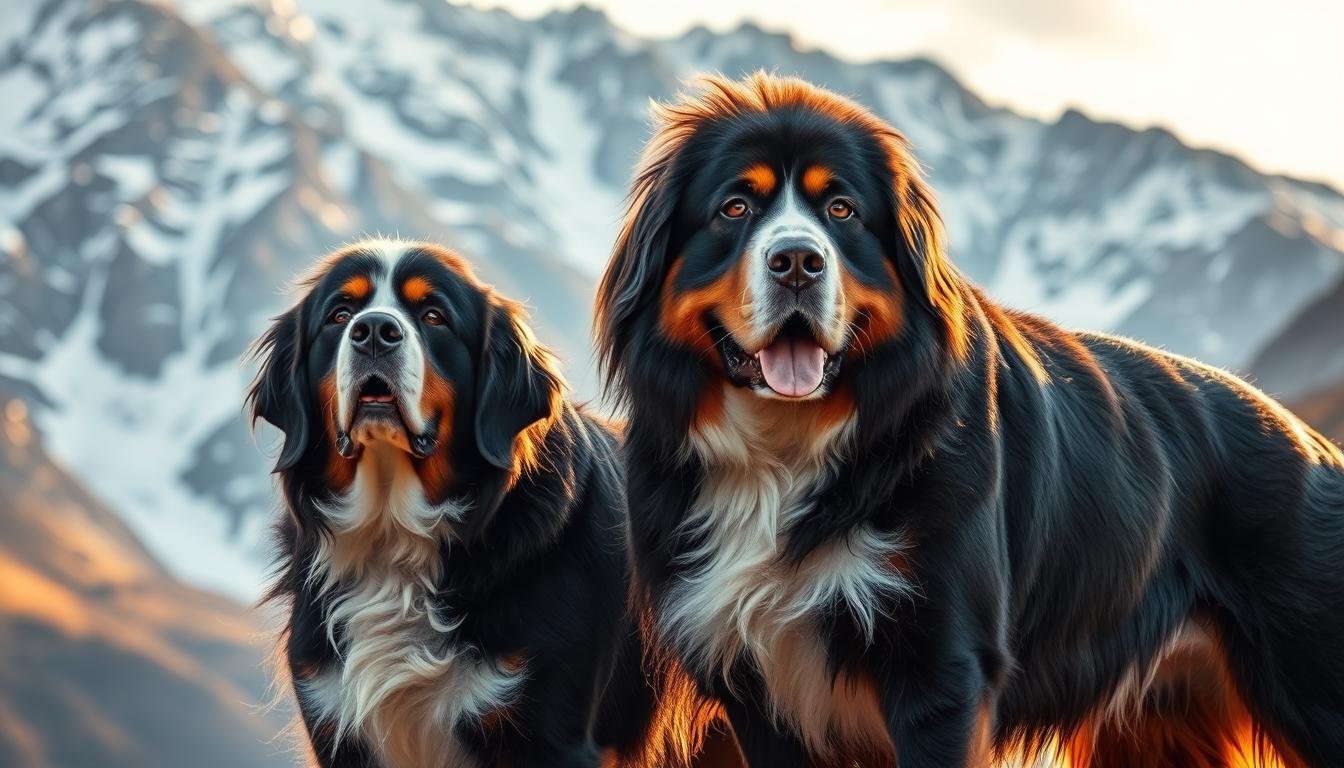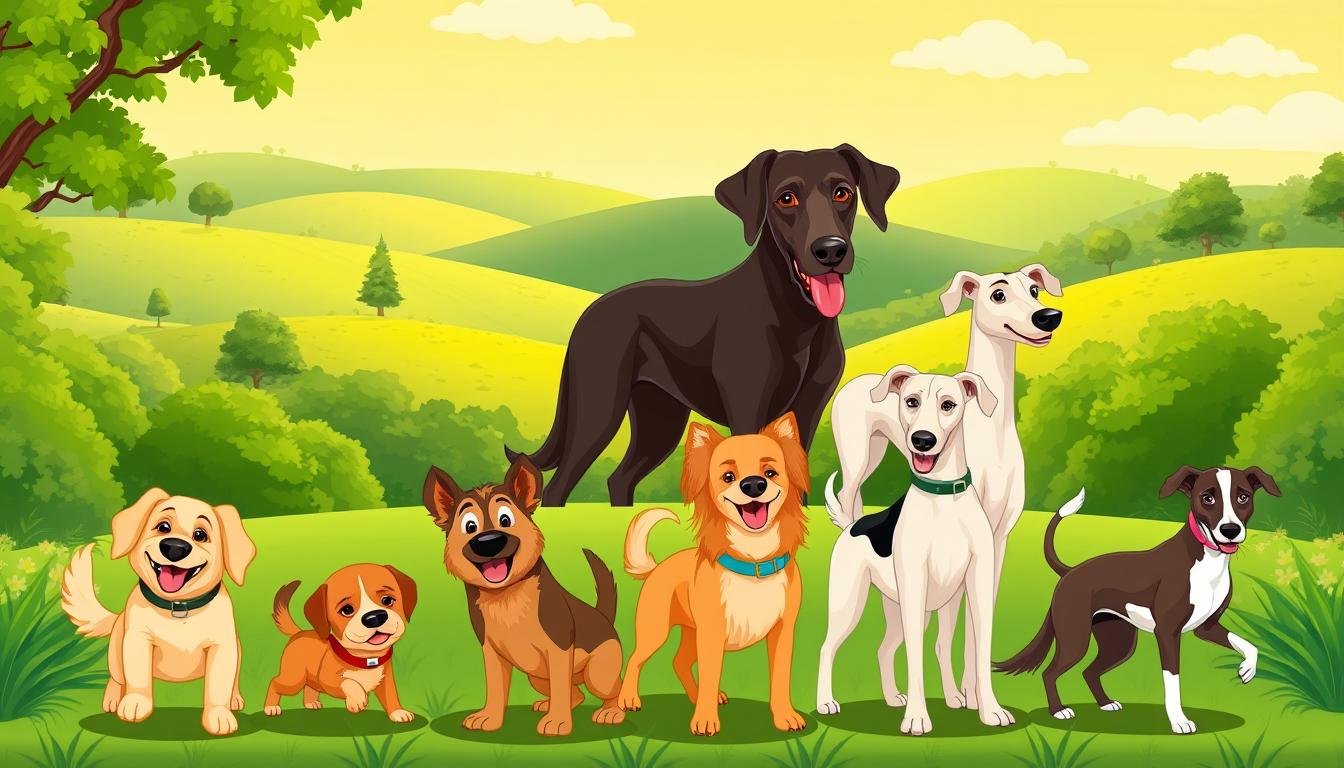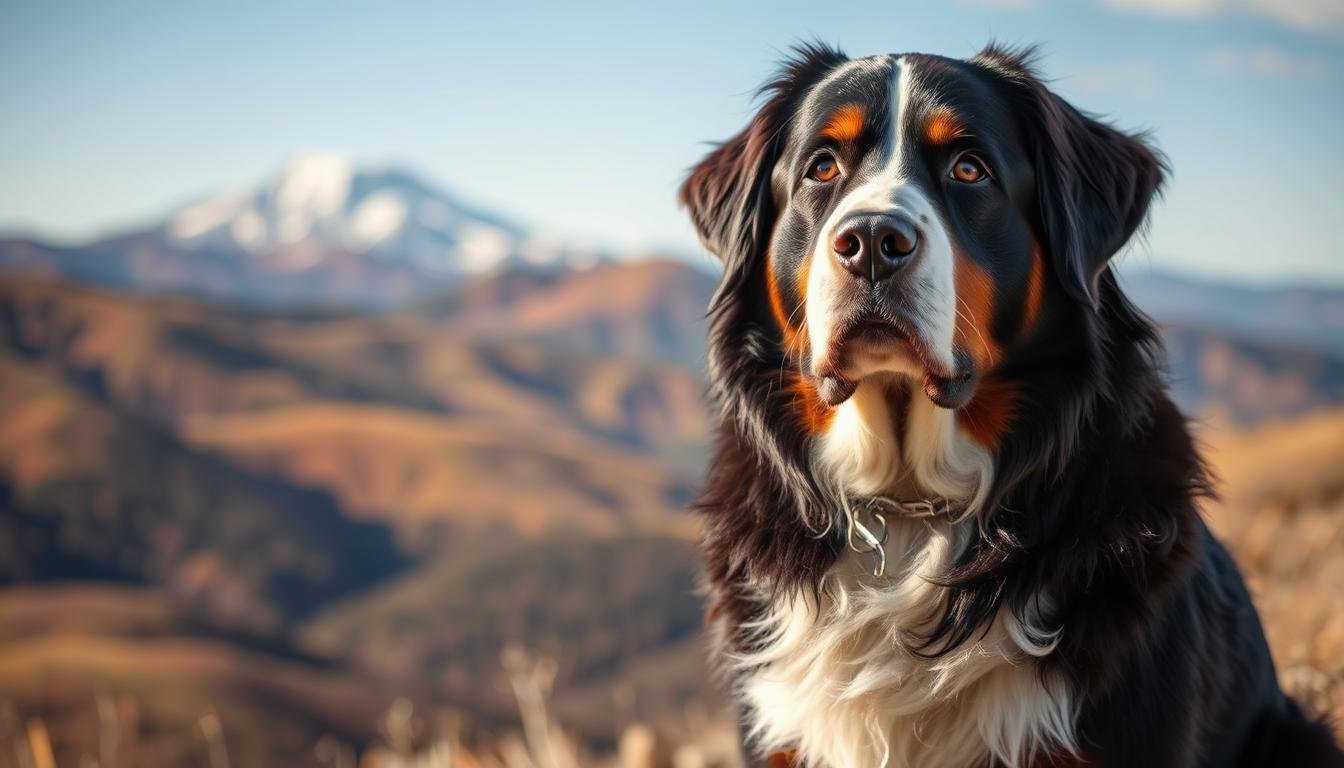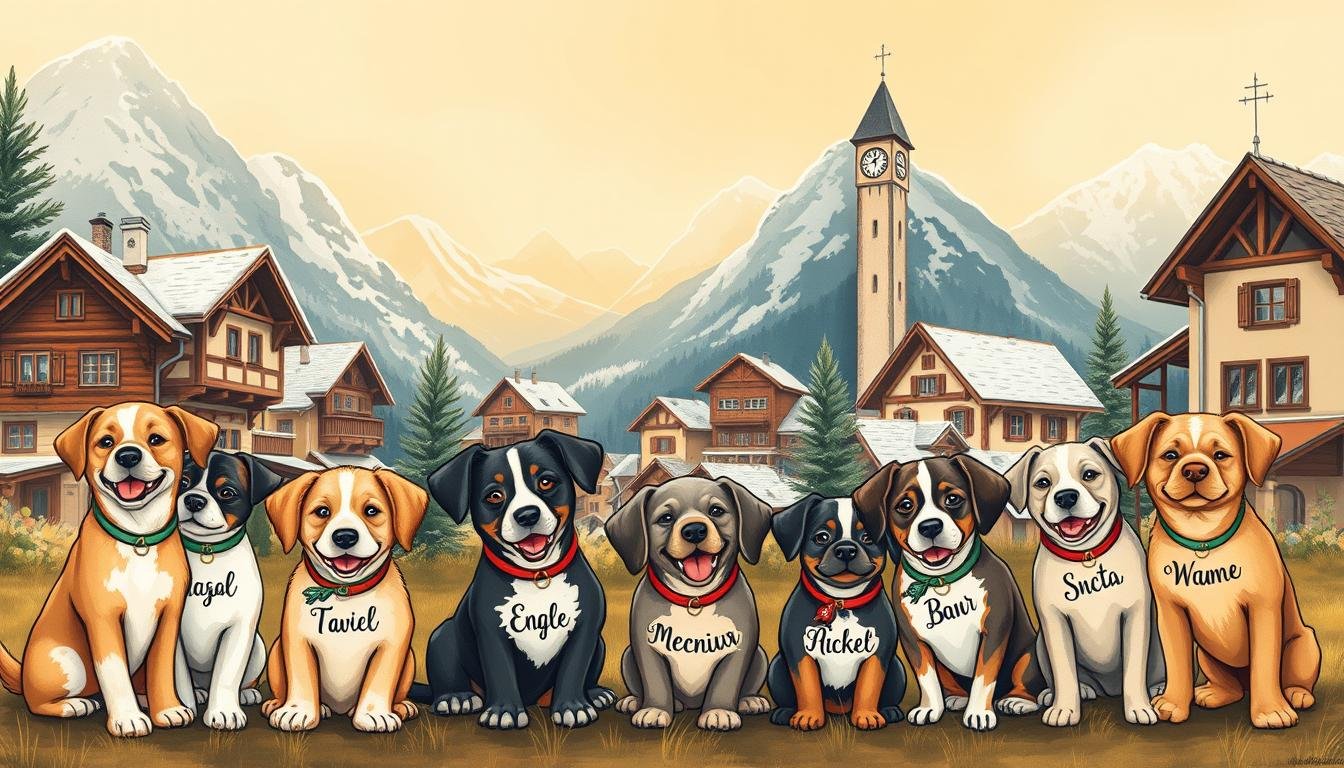Picture this: You’re strolling through a park when two majestic, tricolored companions trot by. Their wagging tails and soulful eyes instantly charm you—but which is which? If you’ve ever wondered how to tell these Swiss legends apart, you’re not alone. We’ve been there too, caught between admiration and confusion for these Alpine icons.
Born from the same rugged landscapes, these gentle giants share more than just striking coats. Both were bred to haul carts through snow-dusted villages, their strength matched only by their loyalty. Yet beneath those similar markings lie personalities as distinct as Swiss chocolate varieties. One’s a fluffy cuddle magnet, the other a sleek history buff with legs for days.
Choosing between them isn’t about finding the “better” breed—it’s about discovering which mountain-shaped heart fits your home. We’ll crack the code on their quirks, care needs, and that special spark that makes each breed unforgettable. Ready to become a Swiss dog connoisseur?
Key Takeaways
- Both breeds originated as working dogs in Swiss alpine regions
- Tricolor coats create striking visual similarities at first glance
- Significant differences exist in coat texture and body structure
- Distinct temperaments suit different family lifestyles
- Health considerations vary between the two breeds
- Exercise needs reflect their historical working roles
Understanding Our Swiss Alpine Heritage
Time travel with us to snow-capped peaks where frosty mornings began with four-legged alarms. These versatile workers didn’t just adapt to mountain life—they shaped it. Their legacy lives in every wagging tail and cart-pulling stride we see today.
Historical Background of Swiss Mountain Dogs
Centuries ago, Swiss farmers needed canine multitaskers. The result? Two remarkably capable breeds born from necessity. One originated near Bern as a fluffy jack-of-all-trades, while the other claims seniority as the original alpine workhorse.
| Breed | Origin | Primary Roles | Distinct Traits |
|---|---|---|---|
| Bernese | Bern Region | Cattle driving, cart pulling | Longer coat, gentle demeanor |
| Greater Swiss | Alpine Valleys | Herding, heavy hauling | Short coat, ancient lineage |
Traditional Roles on the Farm
Imagine a day where your dog serves as alarm clock, truck, and security system. These breeds did it all:
- Guarded homesteads from predators
- Pulled milk carts weighing hundreds of pounds
- Herded livestock across rocky terrain
Their work ethic remains unmatched. While modern life offers softer jobs, that determined spark still lights up their eyes during playtime or training sessions.
Physical Characteristics and Size Differences

Ever tried guessing someone’s height while they’re sitting down? That’s what comparing these Swiss giants feels like. Their physical traits reveal fascinating contrasts hidden beneath similar color schemes – think siblings sharing a wardrobe but rocking different hairstyles.
Measuring Up the Alpine Titans
When standing shoulder-to-shoulder, the Greater Swiss Mountain Dog dominates the tape measure. Males tower up to 28.5 inches tall – nearly eye-level with your kitchen counter – while packing 115-140 pounds of muscle. Their Bernese cousins play it slightly cooler at 27.5 inches and 80-115 pounds. We’ve seen Berners somehow occupy entire couches at half the weight, proving fluff factor matters.
Fur Real: The Great Coat Debate
One’s a walking fleece blanket, the other a sleek satin throw. The Bernese sports that iconic long, flowing double coat perfect for snowball fights, while Swissies rock practical short topcoats. Both shed enough fur to stuff a mattress monthly. Their distinctive markings follow strict breed standards – Berners demand precise white blazes, while Swissies embrace more artistic license with their rust accents.
Head shape seals the deal: Swissies boast broader skulls like ancient warriors, while Berners have softer expressions that scream “cuddle time”. You’ll never mix them up once you spot these telltale features.
Temperament and Personality Traits
Ever noticed how some dogs wear their job titles like superhero capes? These Swiss natives approach life with distinct philosophies – one melts hearts like Alpine chocolate, the other patrols like a furry security detail.
Family Loyalty and Companionship
Both breeds could teach GPS systems about tracking. A Bernese becomes your personal heating pad during Netflix marathons, radiating warmth through soulful eyes and a perpetually wagging tail. The Swissy? Think loyal bodyguard who moonlights as a lapdog – if your lap can handle 115 pounds of devotion.
“Our Swissy once blocked the bathroom door until we installed a baby gate – he takes ‘family togetherness’ very seriously.”
Work Ethic and Alertness
While both have watchdog DNA, their approaches differ:
| Trait | Bernese | Greater Swiss |
|---|---|---|
| Stranger Response | Reserved observer | Curious greeter |
| Bark Volume | Decent doorbell | Foghorn symphony |
| Focus Level | Distracted by snacks | Mission-oriented |
The Swissy’s deep bark could register on Richter scales, while Berners prefer silent stares that say “I’ve got my eye on you.” Both excel at making families feel like royalty – just don’t expect privacy during bubble baths.
bernese mountain dog vs greater swiss mountain dog: Key Breed Comparisons
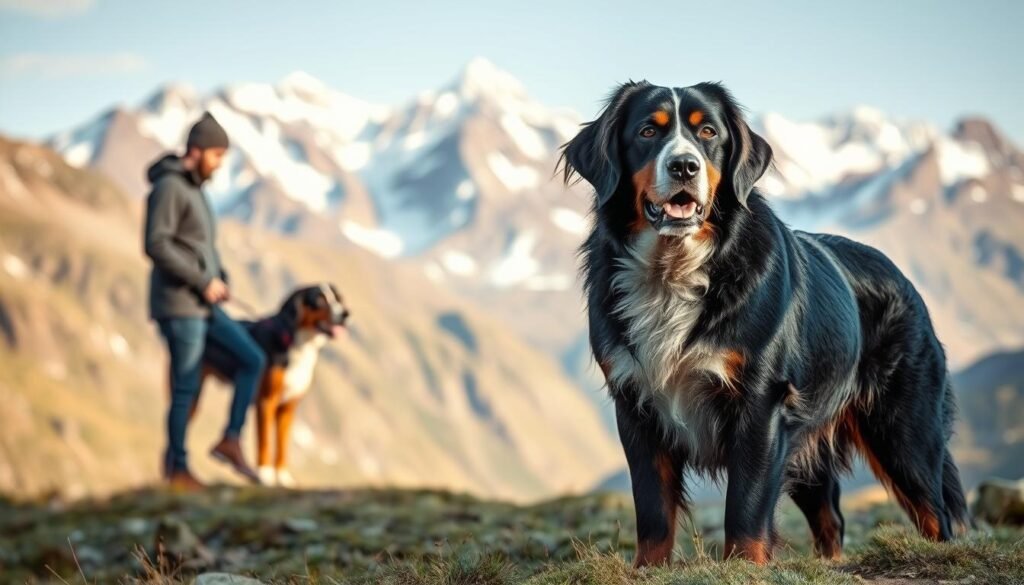
Who needs a gym membership when you’ve got a Swiss mountain companion? These powerhouse breeds turn daily walks into Olympic training sessions while keeping your home decor… textured. Let’s explore what keeps them thriving.
Exercise and Activity Needs
Both breeds share an hour-long daily exercise requirement, but their energy signatures differ like espresso shots versus slow-brewed tea. The athletic Swissy thrives on challenging hikes or agility courses, while Berners prefer leisurely strolls with frequent sniffing breaks. We’ve seen Swissies outlast toddlers at playgrounds – their stamina is legendary.
Grooming and Maintenance Considerations
Prepare for a love affair with fur management tools. Berners require biweekly brushing marathons (daily during seasonal coat blows), transforming your living room into a tumbleweed convention. Their Swiss cousins shed less dramatically but still leave calling cards on dark jeans.
| Care Aspect | Bernese | Greater Swiss |
|---|---|---|
| Brushing Frequency | 3-4x weekly | 1-2x weekly |
| Vacuum Sessions | Daily | Every 3 Days |
| Shedding Seasons | Spring/Fall | Moderate Year-Round |
Pro tip: Invest in a deshedding tool that could double as a wool carder. Both breeds reward consistent grooming with healthier coats – and fewer hair-based art installations on your sofa.
Health Considerations and Training Tips
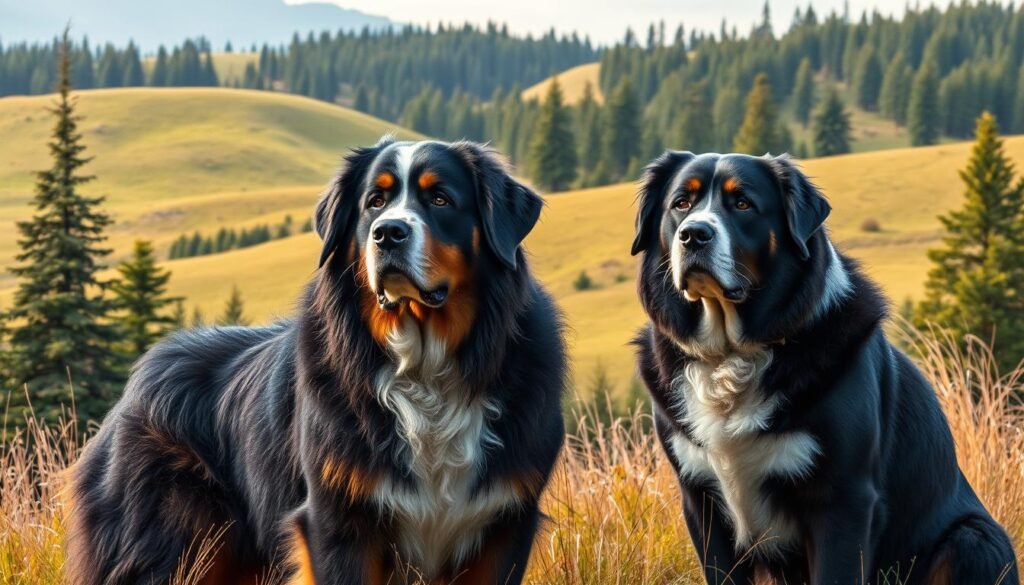
Owning a giant breed means signing up for twice the love – and twice the responsibility. Let’s talk brass tacks about keeping these gentle giants thriving while navigating their unique quirks.
Common Health Issues and Concerns
GDV isn’t just scary letters – it’s every big dog owner’s nightmare. This stomach-twisting emergency can strike faster than a squirrel darts across your yard. We always recommend slow-feed bowls and multiple small meals to reduce risks.
Von Willebrand’s disease turns minor scrapes into major concerns for one breed, while both face joint issues that make staircases their nemesis. Reputable breeders prove their worth here – ask for OFA certifications like you’re vetting a presidential candidate.
Training Approaches for Large Breeds
One breed brings their A-game to training sessions, the other brings… creative interpretations. Our favorite comparison? Golden Retriever enthusiasm versus Cat Logic™️ in a 100-pound package.
“Training our Swissy felt like negotiating with a furry CEO – treats were the only currency that worked.”
Start early with large breed-specific food that supports joint health. Use reward-based methods that make obedience feel like winning the treat lottery. Remember: consistency trumps brute strength when your trainee outweighs you.
Owner Suitability and Lifestyle Compatibility
Choosing between these alpine companions isn’t just about fur length or size—it’s about matching energy signatures to your daily rhythm. Their needs paint vivid lifestyle portraits, from cozy couch sessions to mountain trail adventures.
Training Temperaments
New to large dog breeds? The fluffy charmer tends to graduate top of obedience class, though you’ll earn a second job as a part-time groomer. Their shorter-coated cousin plays the “enthusiastic intern” role—eager to please but occasionally rewriting the rulebook.
Climate Considerations
Both mountain-born breeds think air conditioning is humanity’s greatest invention. While they adapt to warmer regions, we recommend:
- Early morning walks before sidewalks sizzle
- Cooling mats that rival your best memory foam
- Indoor playdates during summer peaks
Whether you’re a rookie owner or seasoned pro, these Swiss treasures reward commitment with unmatched loyalty. The right fit? That’s where your lifestyle meets their ancestral wisdom—no yodeling required.

